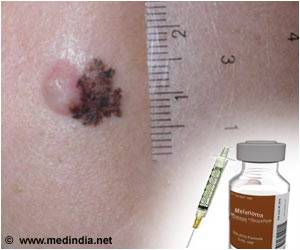Lack of RNA editing, a process by which information inside RNA molecules is transformed, in melanoma leads to tumor growth and progression through manipulation of proteins.

The research team evaluated the RNA editing functioning of ADAR1 in microRNAs (miRNAs). MiRNAs are small, non-coding molecules that have been linked to several types of cancer. Researchers identified adenosine-to-inosine RNA editing in three microRNAs, and RNA editing occurs only in the non-metastatic (ADAR1-positive), but not in the metastatic melanoma cells (ADAR1-negative). Manipulation of the miRNAs by silencing the naturally occurring or wild-type version of a miRNA and over-expressing an 'edited' miRNA confirmed the significance of RNA editing in tumor growth and metastasis.
Bar-Eli said, "We found that increased wild-type miRNA led to increased tumor growth and cancer spread. In contrast, over-expression of the edited miRNA led to decreased tumor growth and metastasis. The biological functions of edited mi RNAs are different from unedited forms, as they recognize a different set of genes. These results demonstrate a previously unrecognized role for RNA editing in melanoma progression."
The study findings appear in 'Nature Cell Biology'.
Source-Medindia












